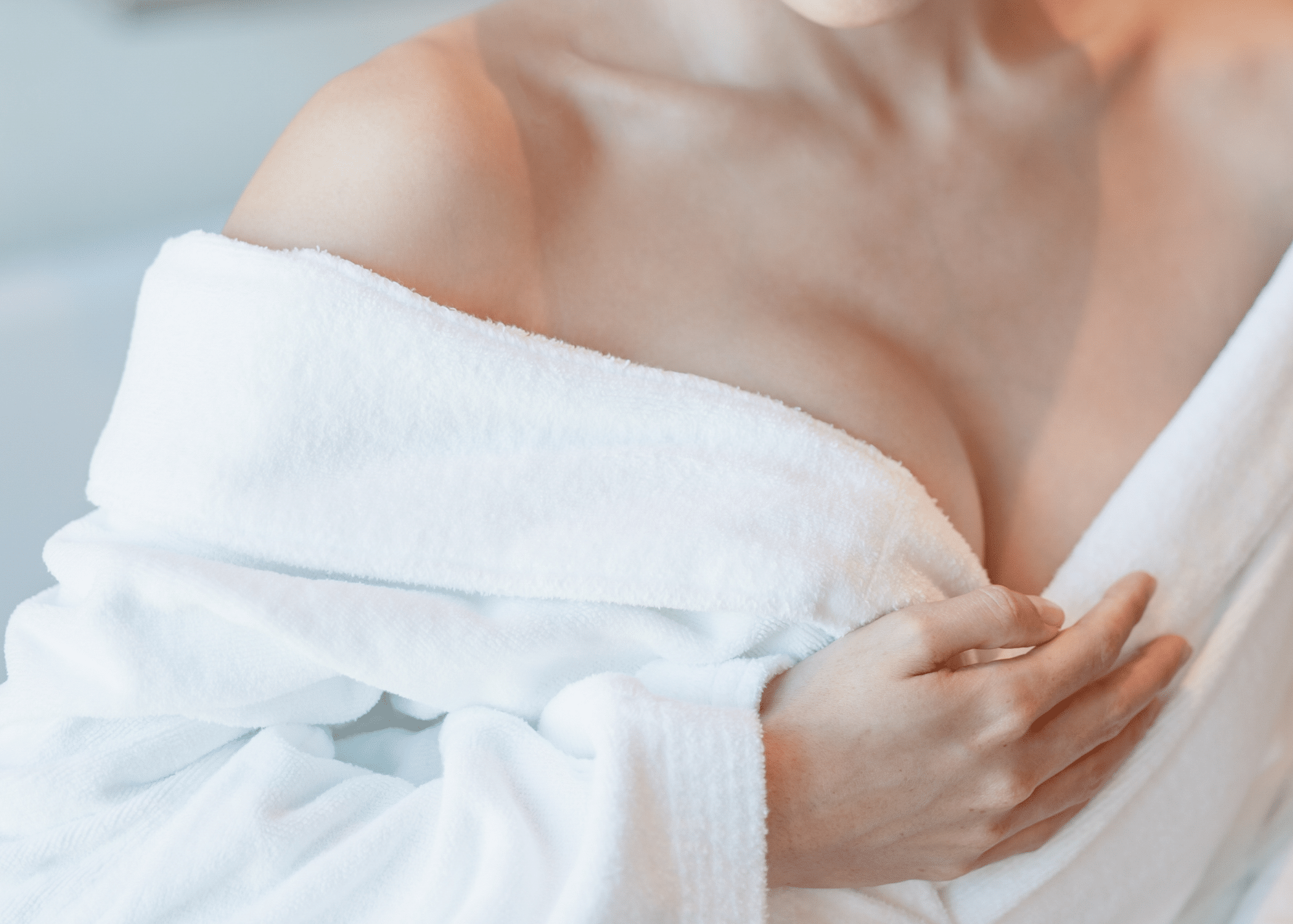
Regarding skin rejuvenation, few treatments deliver results as powerfully as chemical peels and laser resurfacing. Both options can dramatically improve skin tone, texture, and radiance, helping reduce sun damage, fine lines, discoloration, and even acne scars.
But while these treatments share similar goals, they work in different ways and may be better suited for specific skin concerns. Understanding how each therapy works can help you make a more confident, informed decision if you’re wondering whether to choose a chemical peel or laser resurfacing.
What Is a Chemical Peel?
A chemical peel uses a specially formulated solution to exfoliate the top layers of the skin. By removing damaged surface cells, it encourages healthy new skin to emerge, smoother, brighter, and more even in tone.
There are several types of chemical peels, ranging from superficial to deep. Your provider will choose the right strength and formulation based on your skin type and goals.
Common peel types include:
- Light peels (using alpha hydroxy acids or glycolic acid) to improve mild texture issues and dullness
- Medium peels (using trichloroacetic acid or salicylic acid) to treat sun damage, acne scars, and uneven pigmentation
- Deep peels (using phenol and croton oil) for more severe wrinkles and deeper skin imperfections
Most chemical peels are performed in-office and require minimal downtime, though deeper peels may involve several days of redness and flaking.
What Is Laser Skin Resurfacing?
Laser resurfacing uses concentrated beams of light energy to remove damaged skin cells and stimulate collagen production in deeper layers of the skin. This resurfaces the top layer and firms and tightens the underlying structure over time.
There are two main categories of laser resurfacing:
- Ablative lasers, such as CO2, vaporize the outer layer of skin and are best for moderate to severe sun damage, deep lines, or scars.
- Non-ablative lasers, like Fraxel, penetrate the skin without removing the surface. They stimulate collagen production and improve tone and texture with less downtime, though they usually require a series of treatments for optimal results.
- It’s important to note that IPL (Intense Pulsed Light) therapy is often grouped with laser treatments, but it is not a laser. IPL uses broad-spectrum light instead of focused laser energy. It’s effective for treating hyperpigmentation, redness, and broken capillaries, but doesn’t offer the same collagen-boosting or resurfacing effects as true lasers.
Laser treatments are highly customizable, and your provider will adjust the intensity and type of laser based on your skin tone, sensitivity, and concerns.
Key Differences Between Chemical Peels and Laser Resurfacing
While both treatments can improve tone, texture, and clarity, they differ in terms of how they achieve results and how your skin responds during recovery.
Chemical peels:
- Use acids to exfoliate damaged surface skin
- Range from very light to very deep in intensity
- Are better for surface-level issues like pigment, dullness, or acne
- May require multiple sessions for optimal results
- Have lower upfront costs
- Typically involves redness and flaking for 1 to 7 days, depending on the depth
Laser resurfacing:
- Uses heat energy to remove skin and boost collagen
- Can treat deeper wrinkles, texture, and laxity
- Provides more dramatic results in one session (especially with ablative lasers)
- May involve several days to two weeks of redness, swelling, and healing
- Carries a higher cost but longer-lasting results
- Often requires more prep and post-care, especially for darker skin tones
Which Skin Concerns Respond Best to Each Treatment?
Both treatments can address multiple concerns, but each one shines in specific areas.
Chemical peels are excellent for:
- Mild to moderate hyperpigmentation or melasma
- Dull or uneven skin tone
- Early signs of aging (fine lines, mild texture)
- Acne and post-acne marks
- Oily or breakout-prone skin
Laser resurfacing is ideal for:
- Deep wrinkles or etched lines (especially around the eyes or mouth)
- Moderate to severe sun damage
- Acne scars or surgical scars
- Skin laxity or crepiness
- Firming and collagen stimulation
A chemical peel may be all you need if your concerns are primarily on the surface tone, pigment, or minor texture. Laser resurfacing is often the better fit if you’re looking to address structural issues like sagging, wrinkles, or scarring.
How to Choose the Right Option for Your Skin Type
Your skin tone, sensitivity, and history with other treatments will influence which approach is safest and most effective.
Patients with lighter skin tones generally tolerate both chemical peels and lasers well. However, those with medium to deeper skin tones need extra care, especially with deeper peels and ablative lasers, as these treatments can sometimes trigger post-inflammatory pigmentation.
In these cases, a series of gentler peels or non-ablative laser sessions may be recommended. Pre-treatment with pigment suppressors or gentle skincare may also help minimize risk and support a healthy result.
Your provider will evaluate your Fitzpatrick skin type, medical history, and goals before recommending a specific treatment.
Combining Treatments for Enhanced Results
Some patients benefit from combining chemical peels and laser treatments as part of a larger skin health plan. For example:
- A peel may be used before laser to prep the skin and enhance results
- A series of light peels can be performed between laser sessions to maintain glow and clarity
- Lasers may follow a peel series to address deeper concerns once surface issues are resolved
Spacing out treatments appropriately and using medical-grade skincare at home can greatly enhance and extend your results.
What to Expect from Recovery and Results
Recovery varies depending on the depth and intensity of the treatment.
For light chemical peels, expect minor redness and flaking for 1 to 3 days. Medium-depth peels may cause more visible peeling, dryness, and a longer healing period of 5 to 7 days. Deep peels require longer downtime and more medical supervision.
Laser recovery depends on whether your treatment was ablative or non-ablative. Non-ablative lasers may result in mild redness and sensitivity for 1 to 3 days. Ablative lasers can require 7 to 14 days of downtime with significant redness, swelling, and peeling. Sun avoidance is especially critical after both types of treatments.
Results from both peels and lasers continue to improve for several weeks as new skin emerges and collagen production increases. With proper care and sunscreen use, results can last months or even years.
Why CO2 Laser Resurfacing Is the Gold Standard for Skin Rejuvenation
When it comes to dramatic, skin-transforming results, few treatments compare to CO2 laser resurfacing. In fact, it’s one of the most powerful tools we have to reverse visible signs of aging and improve overall skin tone, texture, and clarity.
CO2 lasers work by delivering intense, targeted energy that removes the outermost layers of skin while stimulating deep collagen remodeling. This dual action makes it incredibly effective for smoothing fine lines, tightening skin, fading dark spots, and softening deep wrinkles and acne scars. It’s especially impactful around the eyes, mouth, and jawline—areas where aging tends to show first.
In our practice, we’ve seen CO2 laser resurfacing produce some of the most transformative improvements in skin quality. Patients often describe their results as life-changing: skin appears brighter, firmer, and noticeably more youthful.
That said, this isn’t a lunchtime procedure. CO2 laser resurfacing is intensive and comes with real downtime—often 7 to 14 days of redness, peeling, and healing. Because the treatment is uncomfortable and involves ablating deeper layers of skin, it’s typically performed under anesthesia.
For this reason, we often recommend CO2 laser resurfacing in conjunction with other surgical procedures—such as a facelift, eyelid lift, or brow lift—so that patients only need one period of anesthesia and recovery. It’s a highly strategic way to maximize results across both skin quality and structural rejuvenation.
While it’s not the right choice for every patient or every skin type, for those seeking significant improvement in skin tone, deep wrinkles, and visible aging, CO2 laser resurfacing remains the gold standard. It requires commitment—but the payoff is extraordinary.
Investing in Your Skin’s Long-Term Health
Both chemical peels and laser resurfacing offer powerful tools to support clearer, smoother, younger-looking skin. Choosing the right one depends on your concerns, skin type, lifestyle, and downtime tolerance.
At Plastic Surgeons of Northern Arizona, our licensed aestheticians and board-certified providers will evaluate your skin and customize a treatment plan to safely deliver visible, lasting results.
Whether you’re looking for a quick refresh or a long-term transformation, we’re here to guide you through the process, so your skin looks better and stays healthier in the long run.
Schedule a consultation with our qualified aestheticians today to determine whether a chemical peel, laser treatment, or a customized combination is right for your skin.
Author Profile: Brian Cripe, M.D., is an award-winning, board-eligible plastic and reconstructive surgeon and Plastic Surgeons of Northern Arizona partner. Dr. Cripe specializes in cosmetic surgery, limb salvage, peripheral nerve microsurgery, hand surgery, and oncologic reconstructive procedures. He has performed over 6,000 surgical cases during his 10-year tenure as a surgeon.




